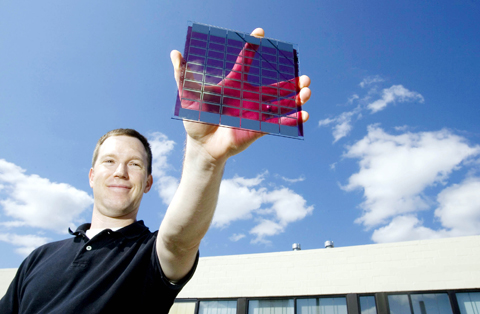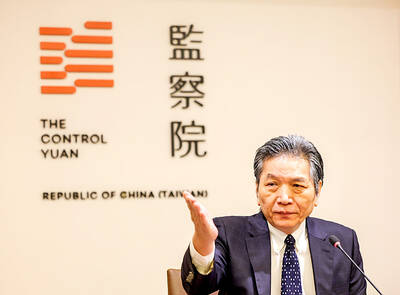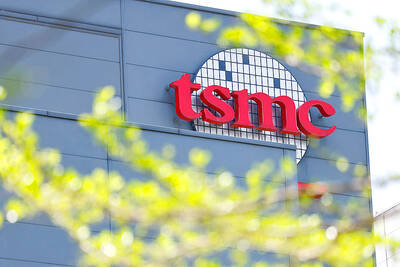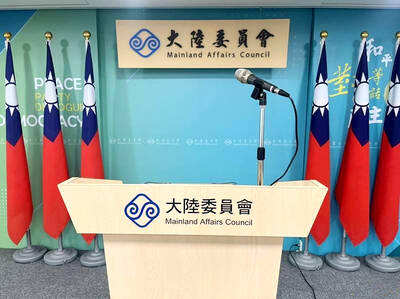The collapse of the US steel industry forced Drew Mihalek in 1977 to leave Pittsburgh, a onetime capital of industry that US President Barack Obama will show to world leaders this week as a “bold example” of a new green economy.
Mihalek, 58, recalls bubbling caldrons of metal during summer jobs at US Steel as a college student. Now he works in a dust-free workplace as an environmental health and safety manager at Solar Power Industries, a maker of solar cells.
Mihalek calls the change in his hometown “kind of like my own personal revitalization.” That shift will be in the spotlight this week as leaders from the G20 nations meet in various “green” buildings — a visible image of the new economy touted by the Obama administration.

PHOTO: REUTERS
Debate before the Pittsburgh summit of leading developed and developing countries has focused on bankers’ pay, regulation of the financial sector and how governments should withdraw from the enormous stimulus packages enacted to blunt the global economic crisis and spur growth.
Climate change and tackling high unemployment are other issues on the G20 agenda, tying into Obama’s vision for a green economy and why Pittsburgh is hosting the summit. But hopes for millions of new green jobs in the US economy may prove more ambitious than many advocates and investors dream of.
Central to a green economy are education, innovation and research, which Pittsburgh offers through schools like Carnegie Mellon University and the University of Pittsburgh. Also key are an educated work force and plentiful raw materials.
Andy Hannah, chief executive of Plextronics, a company that makes organic solar cells and organic light-emitting diodes and uses photoactive inks to print solar cells, said Pittsburgh offers the right mix of corporate and university talent.
Hannah also said Pittsburgh was a prime location for setting up Plextronics because raw materials such as aluminum, glass and plastics are produced locally.
Patrick McCarthy of ATRP Solutions, a polymer maker using technology developed at Carnegie Mellon, also said the key elements for a green company come together in Pittsburgh.
“In this city, we have a history of materials companies commercializing products. This expertise is not everywhere in the country,” McCarthy said.
Despite all its strides — Pittsburgh has one of the largest green collar work forces for a US city its size — some doubt green jobs will be a major engine for the economy.
Lester Lave, an economics professor and director of the Green Design Institute at Carnegie Mellon, said neither oil nor coal will be replaced any time soon. He also said politicians were overly optimistic in their assumptions about new jobs.
There has long been debate along left-right political lines about the viability of green energy and the large government funding needed to get renewable energy off the ground.
The US$787 billion economic stimulus package that Obama signed into law in February included more than US$60 billion in clean energy investments.
A green economy would boost energy independence and reduce a chronic US trade deficit, advocates say. But that dream is still far away: solar and wind power accounted for just 0.6 percent of US energy consumption last year, according to the US Energy Information Administration.
Another selling point for a green economy is that a green collar work force earns 10 percent to 20 percent more than other jobs, the Council of Economic Advisors has said. And those jobs are more likely to be union jobs, the council said.
The poster child for a green economy is solar power, which is expected to drive jobs growth, especially in installation.
But costs still outweigh benefits and industry experts say grid parity is a tipping point that is several years away. Grid parity refers to when solar costs come in line with the cost of electricity from the power grid.
Investors have made big bets on solar energy. There are about 45 publicly traded companies in the sector whose market capitalization is about US$50 billion.
A number of catalysts could spark a sudden conversion to solar panels, as was seen with the rapid adoption of cell phones in the late 1990s, said Shawn Kravetz, president of Esplanade Capital LLC in Boston, who has a fund dedicated to solar energy.
A tipping point could come earlier than many think, perhaps by 2011, especially if carbon taxes or a cap-and-trade program aimed at limiting carbon emissions comes about, Kravetz said. A fall in panel prices, cheap financing and the first solar panel to go up in a neighborhood are enough to spark sales, he said.
“People are more aware that solar isn’t a newfangled technology, it’s by-and-large a 30-year-old technology that works,” he said. “We just need to get the cost to where it’s cost effective, and where, thanks to some government support, we’re finally there.”

‘ABUSE OF POWER’: Lee Chun-yi allegedly used a Control Yuan vehicle to transport his dog to a pet grooming salon and take his wife to restaurants, media reports said Control Yuan Secretary-General Lee Chun-yi (李俊俋) resigned on Sunday night, admitting that he had misused a government vehicle, as reported by the media. Control Yuan Vice President Lee Hung-chun (李鴻鈞) yesterday apologized to the public over the issue. The watchdog body would follow up on similar accusations made by the Chinese Nationalist Party (KMT) and would investigate the alleged misuse of government vehicles by three other Control Yuan members: Su Li-chiung (蘇麗瓊), Lin Yu-jung (林郁容) and Wang Jung-chang (王榮璋), Lee Hung-chun said. Lee Chun-yi in a statement apologized for using a Control Yuan vehicle to transport his dog to a

EUROPEAN TARGETS: The planned Munich center would support TSMC’s European customers to design high-performance, energy-efficient chips, an executive said Taiwan Semiconductor Manufacturing Co (TSMC, 台積電), the world’s largest contract chipmaker, yesterday said that it plans to launch a new research-and-development (R&D) center in Munich, Germany, next quarter to assist customers with chip design. TSMC Europe president Paul de Bot made the announcement during a technology symposium in Amsterdam on Tuesday, the chipmaker said. The new Munich center would be the firm’s first chip designing center in Europe, it said. The chipmaker has set up a major R&D center at its base of operations in Hsinchu and plans to create a new one in the US to provide services for major US customers,

BEIJING’S ‘PAWN’: ‘We, as Chinese, should never forget our roots, history, culture,’ Want Want Holdings general manager Tsai Wang-ting said at a summit in China The Mainland Affairs Council (MAC) yesterday condemned Want Want China Times Media Group (旺旺中時媒體集團) for making comments at the Cross-Strait Chinese Culture Summit that it said have damaged Taiwan’s sovereignty, adding that it would investigate if the group had colluded with China in the matter and contravened cross-strait regulations. The council issued a statement after Want Want Holdings (旺旺集團有限公司) general manager Tsai Wang-ting (蔡旺庭), the third son of the group’s founder, Tsai Eng-meng (蔡衍明), said at the summit last week that the group originated in “Chinese Taiwan,” and has developed and prospered in “the motherland.” “We, as Chinese, should never

‘A SURVIVAL QUESTION’: US officials have been urging the opposition KMT and TPP not to block defense spending, especially the special defense budget, an official said The US plans to ramp up weapons sales to Taiwan to a level exceeding US President Donald Trump’s first term as part of an effort to deter China as it intensifies military pressure on the nation, two US officials said on condition of anonymity. If US arms sales do accelerate, it could ease worries about the extent of Trump’s commitment to Taiwan. It would also add new friction to the tense US-China relationship. The officials said they expect US approvals for weapons sales to Taiwan over the next four years to surpass those in Trump’s first term, with one of them saying